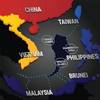China plans to make use of Arctic sea route for its shipping to shorten the distance by 30 per cent compared to the ocean passages traditionally used to connect the northern Atlantic and Pacific oceans through Panama Canal.
Chinese ships will navigate the Arctic via a Northwest Passage route that will be 30 per cent shorter than the ocean passages, official media here reported.
“Once this route is commonly used, it will directly change global maritime transportation and have a profound influence on international trade, the world economy, capital flow and resource exploitation,” said Liu Pengfei, the ministry’s spokesman, at a news briefing.
China is increasingly active in the polar region, becoming one of the biggest mining investors in Greenland and agreeing a free trade deal with Iceland. In 2013, the Arctic Council admitted emerging powers China and India as observers.
Guidelines from China's Maritime Safety Administration, (MSA), released on April 5, offer elaborate information on the route which follows the northern coast of North America via waterways through the Canadian Arctic Archipelago.
He said the 356-page, Chinese-language guide will be very informative. The information includes nautical charts and sea ice situations.
Wu Yuxiao, senior official at the maritime administration who helped write the guide, said the route will lower transportation costs and be strategically important to China.
"Many countries have noticed the financial and strategic value of Arctic Ocean passages," he said. "China has also paid much attention."
Despite the economic value of sailing through the Arctic, Wu said it poses many risks, including the potential for shipwrecks caused by ice and possible damage to the fragile Arctic ecosystem. He said the lack of support infrastructure and an unstable climate also lower the efficiency of Arctic transportation.










